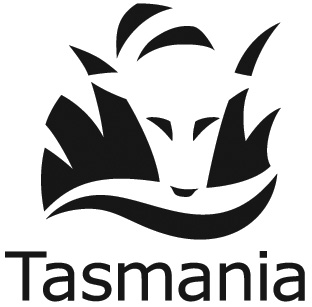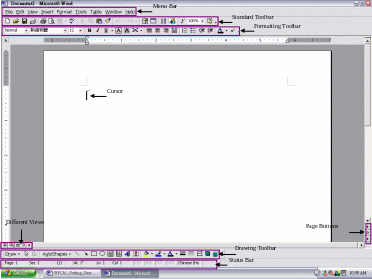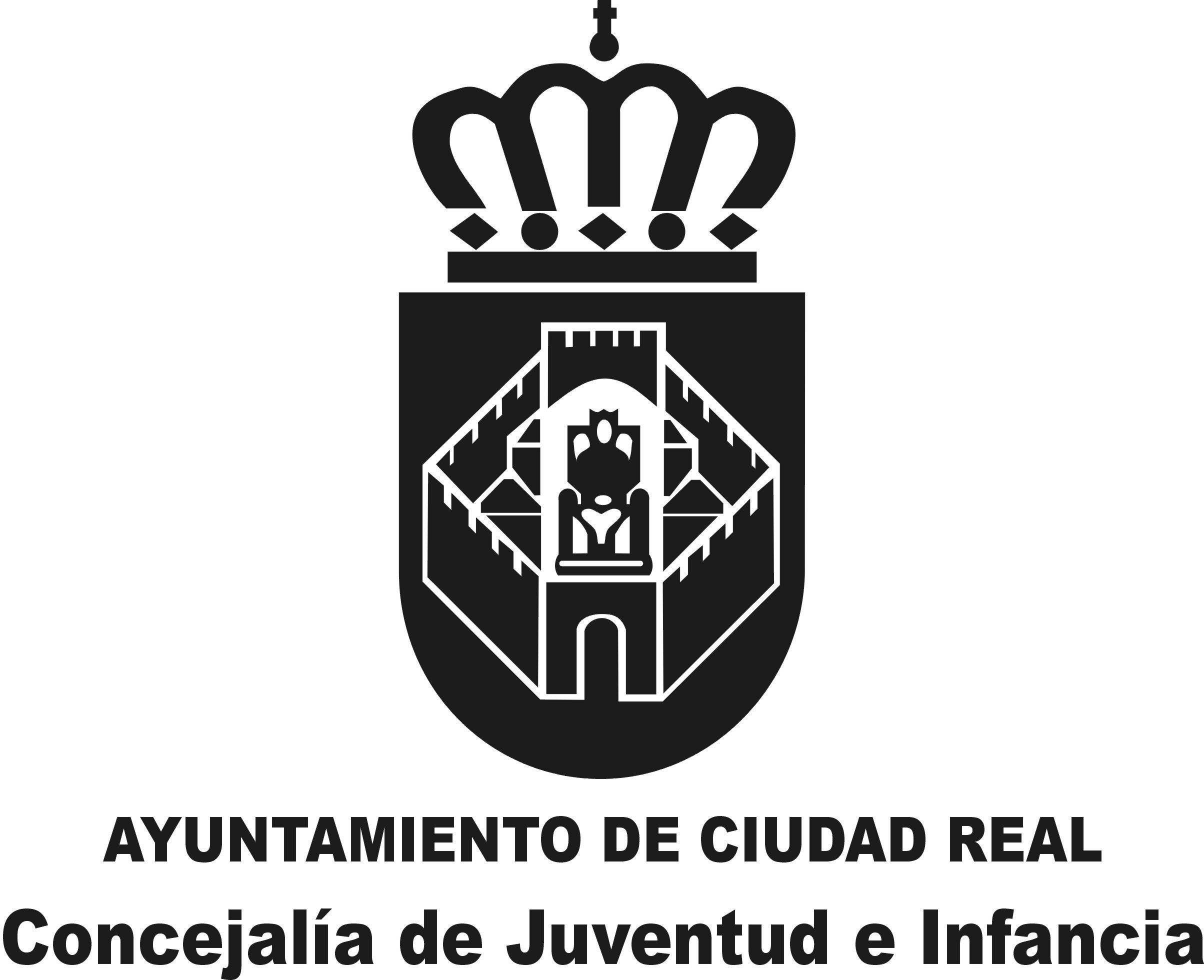CANDACE STRANG PHD 333 HOLLY CREEK COURT THE WOODLANDS
ALAT BUKTI KETERANGAN TERDAKWA DISUSUN OLEH CANDACE ACANDACE STRANG PHD 333 HOLLY CREEK COURT THE WOODLANDS
Candace Strang PhD

Candace Strang PhD
333 Holly Creek Court
The Woodlands, TX 77381
(832) 640-0721 (cell) [email protected]
Teaching
2012- Chemistry, Houston Community College
2009-current Chemistry I, II, Mathematics Review, Lonestar College, Montgomery, TX
2008-9 Chemistry, AP Chemistry; Carl Wunsche High School, Spring ISD
2002-5 Pre-AP Chemistry, AP Chemistry, AP Env. Science, AP Biology; G/T Program at Carnegie Vanguard HS, HISD
1994 Biochemistry, Jr./ Sr. class at Texas A&M University
1987-1988 Cell Biology and Bone Biology at Harvard University
1975-1980 Biochemistry laboratory, and lecture at UCLA
1974-1975 Chemistry laboratory at SIU
Teaching / Certification, Professional Development
2009-2010 Probationary certificate, Passed exams; Science Composite, PPR
2009 Spence Rogers Workshop, Spring ISD
2002-5 Certif. by District permit in a critical needs area, HISD, Science, Secondary
2004-5 36 hours, GT certification, Rice University and Region IV
2004 AP Biology workshop, Rice University
Research
2005-2008 Scientist, Lexicon Pharmaceuticals, The Woodlands, Texas
2005 Visiting Scientist with Ferid Murad, MD, PhD, UT Health Science Center
1998-2004 Research Fellow, Neuroscience with P. Pfaffinger, PhD at Baylor COM
1994-1995 Rotations in Chemistry with Jeffery Kelly, PhD, at Texas A&M University
1989-1992 Research Scientist, Biochemistry/Biophysics, Texas A&M University
1985-1989 Instructor in Pediatrics, Harvard University
1982-1985 Research Fellow in Pediatrics with Fred Rosen, MD, Harvard University
Education
1982 PhD, Biochemistry at University of California, Los Angeles
1975 BS, Chemistry at Southern Illinois University, American Chemical Society certification, Outstanding Senior in Chemistry, Minor in mathematics
Special projects, teaching
2008-2009 Sponsor, Science Olympiad Club, Carl Wunsche HS
2006-2008 Science competition for Montgomery County, Conroe ISD, in molecular biology with sponsor, Lexicon Pharmaceuticals
2003-2004 Sponsor CVHS Technology Club, Robotics and Space Settlement competitions
2004 International Space Settlement Design Competition trip coordinator for team trip to Finals Competition, Cape Canaveral, Florida
2002 Set up Chemistry and Biology laboratories, for magnet, honors high school, CVHS, Solicited funds successfully from parents, corporate sponsors
PROFESSIONAL EXPERIENCE
|
|
LEXICON PHARMACEUTICALS, INC 2005-2008
SCIENTIST
• Piloted in house and CRO deployment of in vivo diagnostic tools for Biotherapeutics group, with the purpose to complement preparation of project antigens and monoclonal antibodies designed to have therapeutic value, in vivo. Launched QC support for automated screening of monoclonal antibodies in multiple projects simultaneously.
• Expedited 1st and 2nd level screens for monoclonal cultures, enabling critical path decisions for project advancement. Organizational skills enabled group of few staff members to produce the quality and quantity of results associated with a larger staffed group
• Formulated high throughput analysis of antibody-antigen and protein-protein interactions. Designed and implemented FACS-array type methods for protein binding in vitro, using physiological extracts, cell culture media, project antigens, both recombinant, and endogenous.
• Keyword Index: proteomic platform • translational research • protein chemistry • high
throughput screening • Biotherapeutics • antibody research • biophysical characterization •
bioanalytical approach • assay innovation • molecular pathophysiology
NEUROSCIENCE, BAYLOR COLLEGE OF MEDICINE 1998-2004
RESEARCH FELLOW
• Integrated approach to protein conformational change—Initiated approaches to characterize folding and protein-protein interface interactions required for assembly of multiprotein complexes for several projects, using multiple solution-based biophysical and biochemical analyses. Strategies included addition of the evolutionary trace evaluation for mutant design. Established our understanding of how proteins work as molecular machines through regulated conformational changes necessary for function.
• Most published collaborator to Paul Pfaffinger -Throughout this time, and, still to the present, produced the most published manuscripts from this young laboratory, through collaborative and self-initiated projects. Manuscripts accepted with minimal revision.
• Inaugural project on signal transduction in neuronal transmission—Examined Kv4.2-centered neuronal circuits in vitro, with neuronal cells, and, in vivo, by stereotactic neurosurgery, for trafficking and cell surface expression of Kv channels and their binding partners, using fluorescent channels and tagged partners. Reconciled the factors that regulate channel expression and cell surface delivery.
• Insightful contribution to neurodegeneration in ischemia—Designed and initiated
a study on the action of the ischemic markers, super-oxide, and NO on channel activity in
transformed cells, neuronal cultures and KO mice v. control mice. The markers altered channel
neurobiology, suggesting a reason for the neuronal hyperexcitability seen in damaged tissue.
Compelling findings yielded a fruitful collaborative effort with a partner lab for the biophysical
component of the study.
• Keyword Index: Peer reviewed manuscript • Neuroscience • translational research • in vivo
diagnostics • protein-protein interactions • protein assembly • fluorescence imaging • structure /
function • protein design • protein engineering • translational research • primary cell culture
BIOCHEMISTRY/BIOPHYSICS, TAMU 1989-1994
RESEARCH SCIENTIST
• Initiated effort on protein assembly and its inhibition with small molecules, peptide synthesis—
biochemical studies on 5 proteins with assembly features important for functional regulation.
• Significant collaboration with Jeffery Kelly, PhD, Department of Chemistry, now VP of The
Scripps Research Institute—Formulated biophysical techniques to determine the extent of
amyloid formation, to facilitate a powerful screen for inhibiting peptides and drug candidate
compounds.
• Landmark studies in amino acid chemistry, metalloprotein chemistry, membrane protein chemistry—Implemented angles in chemical biology to assess metal binding capacity and its control for
several proteins that exhibited either Calcium or Zinc dependent assembly and biological
activity. Developed robust methods for the evaluation of post-translationally modified proteins
translatable for use in living cells to detect and follow intracellular signaling events.
• Diverse knowledge base with Medical training and systems knowledge, vocabulary, pathophysiology, therapeutics—Facile in the languages of clinical evaluation, pathophysiology, other medicine related criteria and appraisals. Understanding of organ systems, both at the systemic level, and at the cellular and molecular level for research planning.
• Keyword Index: structure / function • protein folding • protein design • protein engineering •
metabolomic platform • protein assembly • protein-protein interactions • metalloprotein
chemistry • amino acid chemistry • biophysical characterization • drug screening assay
EDUCATION
• BS, Chemistry at Southern Illinois University, Carbondale, IL 62901
• SIU, American Chemical Society certification, Outstanding Senior in Chemistry
• PhD, Biochemistry at University of California, Los Angeles, CA 90024
• Structural Studies; Complement Component C1, Verne Schumaker, advisor
• Post-doctoral Research Fellow in Pediatrics, Fred Rosen, MD, Harvard University
• Instructor in Pediatrics, Harvard University, Paul Gallop, PhD, Department Chair
• Re-Entry Post-doctoral Fellow, Neuroscience, Paul Pfaffinger, PhD, Baylor COM
PUBLICATIONS
|
|
Peer reviewed journals, professional society sponsored or premier
Neuroscience; construction and regulation of (a) amyloid, (b) the hippocampal A current
Miroy, GJ, Z Lai, HA Laushel, SA Peterson, CJ Strang and JW Kelly (1996) Proc. Natl Acad
Sci 93:15051-15056 Inhibiting transthyretin amyloid fibril formation via protein stabilization.
CJ Strang, SJ Cushman, D DeRubeis and P Pfaffinger (2001) J. Biol. Chem.
276:28493-28502 A Central Role for the T1 domain in Voltage-Gated Potassium Channel
Formation and Function.
Jahng, A, CJ Strang, D Kaiser, T Pollard, P Pfaffinger and S Choe (2002) J. Biol. Chem.
277:47885-90 Zinc mediates T1 tetramerization in Voltage gated Potassium Channel Kv4.2
Strang, CJ, K Kunjilwar, D DeRubeis, D Peterson and P Pfaffinger (2003) J. Biol. Chem.
278:31361-71 The role of Zn2+ in Shal Voltage-gated Potassium Channel Formation.
K Kunjilwar, CJ Strang and P Pfaffinger (2004) J. Biol. Chem. 279:54542-51 KChIP and Zinc
act independently to facilitate Kv 4.2 assembly in vivo.
G Wang, C Rocha, CJ Strang, PJ Pfaffinger, and M Covarrubias (2005) J. General Physiology
126 (1): 55-69 Functionally active T1-T1 interfaces revealed by the accessibility of intracellular
thiolated groups in Kv 4 channels.
G Wang, CJ Strang, PJ Pfaffinger, and M Covarrubias (2007) J. Biol. Chem. 282 (18):
13637-47 Zn2+-dependent redox switch in the intracellular T1-T1 interface of a Kv channel.
Protein allostery, protein and amino acid chemistry
CJ Strang, E Henson, Y. Okamoto, M. Paz and PM Gallop (1989) Analyt. Biochem.
178:276-286 Separation and determination of alpha-amino acids in mixtures by
boroxazolidone formation.
CJ Strang, ME Wales, DB Brown and JR Wild (1993) Biochemistry 32:4156-4160 Site
Directed Alterations to the Geometry of the Aspartate Transcarbamoylase Zn2+ Domain:
Selective Alterations to Regulation by Heterotropic Ligands, Isoelectric Point, and Stability
in Urea.
CJ Strang and R. Fluckiger (1995) Protein Science 4 186-190 Site specificity of glycation onto
lysine side chains of proteins.
Immunology; immunochemical activity of the immune response
CJ Strang, RC Siegel, ML Phillips, PH Poon and VN Schumaker (1982) Proc Natl Acad Sci
79:586-590 Ultrastructure of the first component of human complement: electron microscopy of
the crosslinked complex.
Schumaker, VN, CJ Strang, RC Siegel, ML Phillips and PH Poon (1982) Surv. Immunol. Res.
1:305-315 Electron microscopy of the first component of human complement.
CJ Strang, HS Slayter, PJ Lachmann and AE Davis III (1986) Biochemical J. 234:381-9
Ultrastructure of bovine conglutinin.CJ Strang, S. Cholin, J. Spragg, AE Davis, III,
EE Schneeberger, V Donaldson and FS Rosen (1988) J. Exp. Med. 168 (8):1685-1698
Angioedema induced by a peptide derived from human complement component C2.
Cholin, S, NS Gerard, CJ Strang and AE Davis III (1989) J. Immunol 142:2401-2404 Biological
activity of a C2 derived peptide: evidence for action via a distinct receptor in guinea pig tissues.
CJ Strang, HS Auerbach and FS Rosen (1986) J. Immunol 137:631-635 C1s-induced vascular
permeability in C2 deficient guinea pigs.
Poon, PH, VN Schumaker, ML Phillips and CJ Strang (1983) J. Mol. Biol. 168:563-577
Conformation and restricted segmental flexibility of C1, the first component of human
complement.
Invited book chapters, meeting reports
Bing, DH, MF Regan, A Didonno and CJ Strang (1986) Fractionation of Plasma Proteins by
Electrodialysis in Membrane Separations in Biotechnology, W. Courtney McGregor, NY
Gallop, PM, E. Henson, CJ Strang, MA Paz and Y. Okamoto (1986) Interaction of
hydroxy-boron compounds with amino acids and proteins. Sixth International Conference on
Methods in Protein Sequence Analysis (selection of top twenty papers from this meeting)
Wales, ME, CJ Strang and JR Wild (1991) Regulatory Mechanisms in Aspartate
Transcarbamylase in Recombinant Enzymes V: Engineered Proteins ACS Books
Colon, W, Z Lai, SL McCutchen, GJ Miroy, CJ Strang and JW Kelly (1996) CIBA Foundation
Symposium 199:228-38 and accompanying discussion; 239-242 FAP mutations destabilize
transthyretin facilitating conformational changes required for amyloid formation.
Tags: candace strang, court, candace, creek, holly, strang, woodlands
- 16 S YGN AKT III AUA 48207 W
- 17 | PAGE PRETENDIMI I RREGULLIMIT SHKRUAJTI ABDUL KERIM
- IN ZWEIFACHER AUSFERTIGUNG EINZUREICHEN HHST HJ 20 ) ÜBERSICHTNR
- STANDING ORDER TO THE MANAGER DATE
- 3 FORMBLATT D3 ANTRAG AUF ZULASSUNG EINER
- COMUNICADO Nº 10CD2010 “SOBRE LA CREACION DE JUSDEM” LA
- THE FUTURE OF CONSUMER LAW – THE PERSPECTIVE FROM
- RESEARCH PASSPORT APPLICATION FORM – VERSION 51 08JUL2020 PLEASE
- FACULTAD DE CIENCIAS DE LA EDUCACIÓN PREMIO A LA
- 1RIQUEZA AMBIENTAL ESPACIOS NATURALES LUGAR DE INTERÉS COMUNITARIO
- SYTUACJA EPIDEMIOLOGICZNA GRYPY NA TERENIE MIASTA KRAKOWA W I
- S BODØ KOMMUNE BOLIGKONTORET POSTBOKS 319
- LOGO AUTRE FINANCEUR FORMULAIRE DE DEMANDE DE PAIEMENT DU
- FIRST NAME FAMILY NAME …………………………………………………………………… DATE OF BIRTH ………………………
- ANALISIS PERBEDAAN TARIF RUMAH SAKIT DAN TARIF INACBG’S PELAYANAN
- MARRAKECH PROCESS ON SUSTAINABLE CONSUMPTION AND PRODUCTION TASK FORCE
- MEMÒRIA DE L’ACTIVITAT PROMOGUDA PEL CLUB ANY DADES DE
- VEILEDER FOR KOMMUNALE TILSYNSMYNDIGHETER SOM UTFØRER TILSYN MED ASYLMOTTAK
- CCSAPAH8 PREPARE FOR POTENTIAL DISASTERS O VERVIEW PART OF
- LA TELEVISIÓN DEL FUTURO LA EXCITACIÓN SE ASOMÓ AL
- PROGRAMA DE FORMACIÓN EN INTEGRACIÓN ANDINA PARA FUNCIONARIOS JÓVENES
- TEACHER BACKGROUND UNIT 2 OCEAN CURRENTS AND THE
- WYKŁADY – SEMESTR I POJĘCIE POSTĘPOWANIA CYWILNEGO ŹRÓDŁA PRAWA
- THE MILWAUKEE INVENTORY FOR THE DIMENSIONS OF ADULT SKIN
- MODERN SLAVERY AND HUMAN TRAFFICKING STATEMENT MODERN SLAVERY ACT
- LA AUTONOMÍA DE LA CIUDAD DE BUENOS AIRES LOGROS
- P OLITICA DE PARTICIPACION DE PADRES DE CORA KELLY
- EDUCATION FOR SUSTAINABILITY MATRIX LEVEL 2 LEVEL 3
- SYLABUS NA ROK AKADEMICKI 20202021 CYKL KSZTAŁCENIA 2019202020232024 OPIS
- COMUNICACIÓN INCIDENCIAS 10002 PÁGINA 1 DE 1 NOMBRE EMPRESA
INSERIRE CARTA INTESTATA NULLA OSTA PARTECIPAZIONE ALLA DIREZIONE DEL
PROYECTO DE LEY LEY DE PROTECCIÓN A LA
3 CONSORCIOS PÚBLICOPRIVADOS CÓMO SE ESTÁ PRIVATIZANDO EL SERVICIO
 Diemoebelmacherde Alles Gute zum Einrichten die Möbelmacher Gmbh Unterkrumbach
Diemoebelmacherde Alles Gute zum Einrichten die Möbelmacher Gmbh Unterkrumbach D EPARTMENT OF NATURAL RESOURCES AND ENVIRONMENT TASMANIA CROWN
D EPARTMENT OF NATURAL RESOURCES AND ENVIRONMENT TASMANIA CROWNCATALÀ NIVELL SUPERIOR – D AUTORES Mª LUZ GÓMEZ
MĚSTSKÝ KLUB SENIORŮ HAVÍŘOVPODLESÍ STUDENTSKÁ 9A PŘEDNÁŠKY ZÁŘÍ
 CHAPTER 2 FORMAT PAINTER LINK TO LPYSS DOWNLOAD A
CHAPTER 2 FORMAT PAINTER LINK TO LPYSS DOWNLOAD AWYNIKI VI TURNIEJU KARATE BUSHIDO CUP 2016 KIHON DO
 WOJEWODA ŚWIĘTOKRZYSKI SPRAWOZDANIE KOŃCOWE Z WYKONANIA ZADANIA PUBLICZNEGO W
WOJEWODA ŚWIĘTOKRZYSKI SPRAWOZDANIE KOŃCOWE Z WYKONANIA ZADANIA PUBLICZNEGO W GKILDEN FRA RISØ G KILDEN GMRØRET REGISTRERER KUN
GKILDEN FRA RISØ G KILDEN GMRØRET REGISTRERER KUNU SUBOTU 3 LIPNJA 2017 U 19 SATI U
WYKAZ DRÓG POWIATOWYCH W POWIECIE ŁAŃCUT LP NR DROGI
CARNÉ POR PUNTOS COMIENZA LA CUENTA ATRÁS CAPÍTULO I
PAGE 7 QUESTIONS AND ANSWERS CONCERNING THE EXAMINATIONREFUSAL PROCEDURE
 SOLICITUD CONVOCATORIA PARA LA PRESENTACIÓN DE PROYECTOS PARA EL
SOLICITUD CONVOCATORIA PARA LA PRESENTACIÓN DE PROYECTOS PARA ELCOMPLETED SERVICE REFERRAL FORM CONTAINS PERSONAL DATA AND SPECIAL
METABOLITOS SECUNDARIOS DE LA FLORA DE CHILE DE INTERES
 GUINÉEBISSAU WTTPRS266GNB PAGE 191 ANEXO 2 GUINEABISSAU ÍNDICE PÁGINA
GUINÉEBISSAU WTTPRS266GNB PAGE 191 ANEXO 2 GUINEABISSAU ÍNDICE PÁGINA CAISO PILOT PROPOSAL EVALUATION REQUEST QUESTIONNAIRE COMPLETION OF THIS
CAISO PILOT PROPOSAL EVALUATION REQUEST QUESTIONNAIRE COMPLETION OF THIS